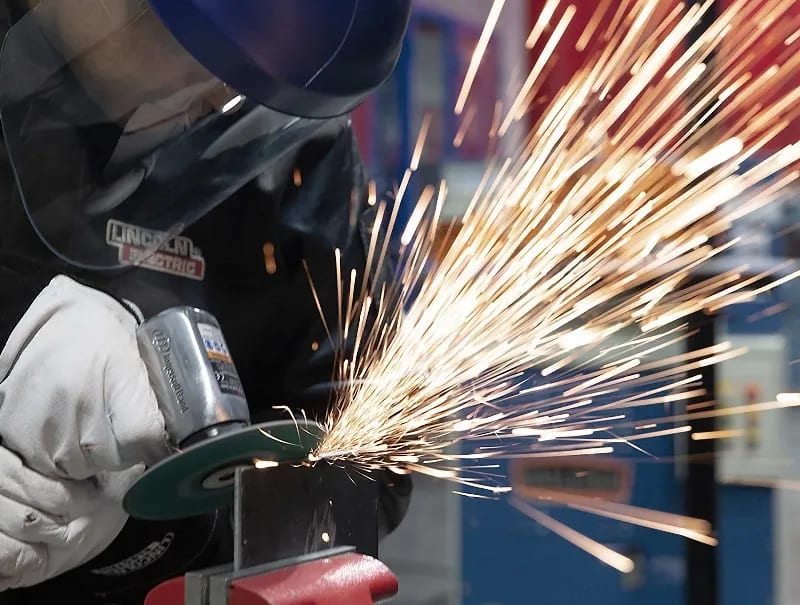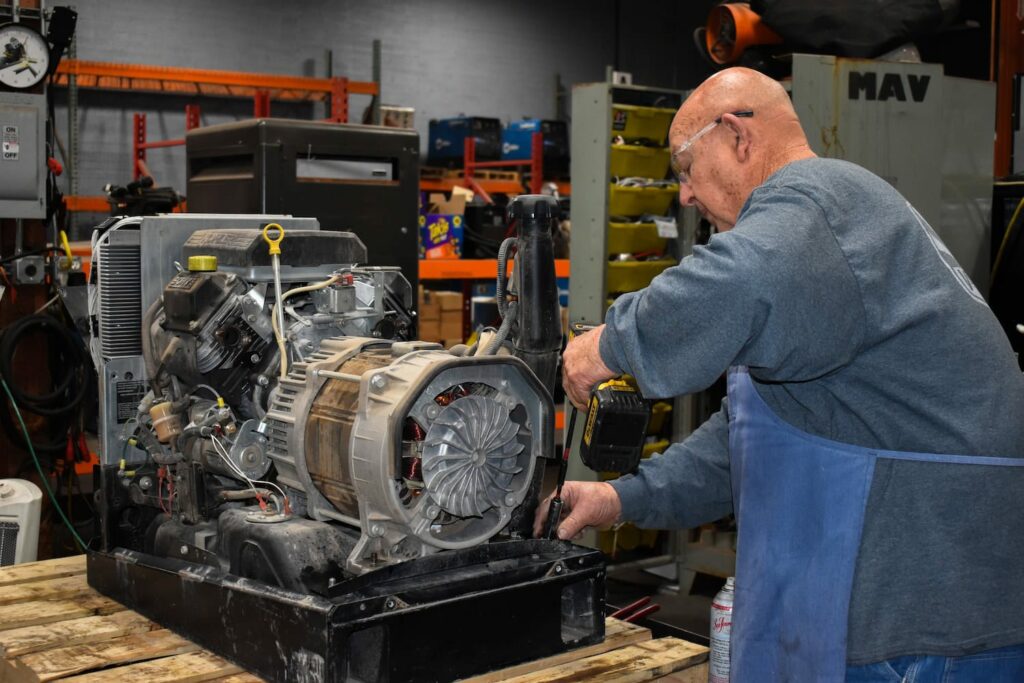Major welding defects you can fix fast by Montana Mobile Welding and Repair Belgrade Fabrication
Typical Welding Repair Issues and Just How to Address Them Properly
Welding repairs usually run into a range of problems that can endanger the stability of the last item. Usual problems include inadequate penetration, porosity, and imbalance, to name a few. Each issue provides distinct difficulties that require specific methods for resolution. Understanding these problems is important for welders aiming to boost their outcomes and abilities. This conversation will explore these typical welding repair problems and effective methods to address them.
Insufficient Penetration
Insufficient infiltration takes place when the weld steel stops working to completely fuse with the base material, resulting in weak joints and prospective structural failings. This concern commonly originates from inadequate warm input, inaccurate electrode angle, or inappropriate welding speed. Welders might encounter insufficient penetration due to a miscalculation of the essential criteria for a specific material thickness or type. In addition, contamination on the base product's surface can impede efficient bonding, exacerbating the problem. To attend to poor infiltration, welders must ensure proper settings on their tools and preserve a tidy job surface area. Normal evaluation of welds is advised to determine any shortages early, allowing for prompt corrections and the avoidance of compromised structural integrity in bonded settings up.
Porosity
Porosity is a typical problem in bonded joints that shows up as tiny gas bubbles entraped within the weld steel. This problem can compromise the honesty of the weld, causing lowered stamina and possible failure under anxiety. Belgrade Welding. Porosity typically emerges from contamination, dampness, or incorrect welding strategies, which enable gases to run away into the molten weld swimming pool. To deal with porosity, welders ought to ensure proper surface preparation, maintain a tidy workplace, and use appropriate welding parameters. In addition, picking the appropriate filler material and securing gas can reduce gas entrapment. Routine inspection and screening of welds can aid identify porosity early, ensuring timely rehabilitative actions are taken, thus maintaining the top quality and reliability of the bonded framework
Imbalance
Misalignment in welding can arise from various variables, consisting of improper configuration and thermal development. Understanding the origin is important for effective resolution. A number of adjustment techniques are available to straighten components and ensure architectural honesty.
Reasons for Imbalance
Welding misalignment often stems from a variety of underlying issues that can jeopardize architectural honesty. One primary reason is incorrect fit-up of parts prior to welding, which can cause voids and uneven surfaces. Variants in thermal development throughout the welding process can likewise lead to distortion, particularly if the materials being joined have various coefficients of expansion. In addition, insufficient fixturing and clamping might fall short to hold components securely in position, bring about movement throughout welding. Inadequately kept equipment, consisting of welding devices and tools, may introduce incongruities in the weld bead, further contributing to misalignment. Driver error, stemming from inadequate training or experience, can likewise play a significant role in developing misaligned welds.

Modification Methods Offered
Addressing imbalance effectively calls for a mix of corrective strategies tailored to the certain problems at hand. One common technique is making use of jigs or fixtures to hold elements in the proper placement during welding, guaranteeing consistent positioning. Furthermore, pre-heating the products can help in reducing distortion and boost fit-up. For significant misalignment, mechanical realignment methods, such as using hydraulic jacks or clamps, can be used to deal with the setting prior to welding. Post-weld warm therapy may also be required to ease anxieties brought on by misalignment. Ultimately, mindful examination and adjustment throughout the setup phase can protect against imbalance problems from coming to be significant troubles, advertising a smoother welding process and boosting total structural integrity.
Distortion
Distortion is a typical challenge in welding that can arise from various aspects, consisting of unequal home heating and cooling. Understanding the reasons for distortion is necessary for applying efficient avoidance methods. Addressing this issue not only improves architectural honesty however likewise enhances the overall high quality of the weld.
Root causes of Distortion
When subjected to the intense warmth of welding, products frequently undertake modifications that can result in distortion. This phenomenon primarily arises from thermal expansion and tightening during the welding process. As the weld location warms up, the material increases; upon cooling, it gets, which can develop inner anxieties. In addition, uneven home heating across a workpiece can worsen these stresses, causing bending or bending. The kind of material likewise plays a significant role; steels with varying thermal conductivity and coefficients of growth may react in different ways, leading to uncertain distortions. Poor joint style and inadequate fixturing can contribute to imbalance throughout welding, increasing the likelihood of distortion. Recognizing these reasons is essential for efficient welding repair service and prevention approaches.
Avoidance Techniques
Reliable prevention methods for distortion during welding focus on managing warm input and guaranteeing correct joint style. Maintaining a regular warm input aids to reduce thermal expansion and tightening, which can result in distortion. Utilizing strategies such as preheating the workpiece can additionally minimize the temperature gradient, promoting consistent home heating. Additionally, selecting suitable joint styles, such as T-joints or lap joints, can improve security and decrease anxiety concentrations. Carrying out correct fixturing to safeguard the work surfaces in area better aids in maintaining positioning during the welding process. Staggered welding sequences can disperse warmth extra evenly, protecting against local distortion. By applying these techniques, welders can substantially decrease the likelihood of distortion and enhance the total top quality of their welds.
Cracking
Splitting is a typical problem encountered in welding repair work, usually arising from various factors such as inappropriate air conditioning rates, product choice, or insufficient joint preparation. The occurrence of splits can considerably compromise the honesty of the weld, resulting in prospective failures throughout procedure. To address this concern, welders need to first examine the origin creates, guaranteeing that products work and suitably picked for the particular application. In addition, managing the air conditioning price during the welding procedure is vital; fast cooling can induce stress and bring about fracturing. Appropriate joint style and preparation likewise add to reducing the threat. Executing these methods can boost weld high quality and toughness, eventually lowering the likelihood of breaking in ended up weldments.

Insufficient Combination
A considerable go to this web-site issue in welding fixings is insufficient fusion, which happens when the weld metal does not effectively bond with the base material or previous weld passes - Belgrade Welding. This defect can lead to weaknesses in the joint, possibly endangering the integrity of the welded framework. Factors adding to incomplete fusion consist of not enough warm input, improper welding method, and contamination of the surface areas being joined. To resolve this problem properly, welders must ensure appropriate pre-weld cleansing and surface prep work, in addition to readjust their welding specifications to accomplish ample penetration and combination. Routine examination during the welding process can additionally help recognize incomplete fusion early, enabling timely restorative steps to enhance the general top quality of the weld
Overheating
While welding repair work can boost architectural stability, overheating offers a considerable difficulty that can bring about product degradation. Extreme warm during welding can alter the mechanical residential properties of metals, resulting in decreased stamina, increased brittleness, and warping. This phenomenon is specifically critical in high-stress applications where structural dependability is vital. Determining overheating can involve visual evaluations for staining or distortion, as well as checking temperature level throughout the welding process. To mitigate the dangers related to getting too hot, welders should use appropriate strategies, such as controlling warm input, changing travel rate, and using ideal filler products. In addition, carrying out pre- and post-weld heat therapies can help restore material buildings and improve the general quality of the repair, ensuring lasting performance and safety and security.
Regularly Asked Questions
What Are the Typical Signs of a Welding Flaw?

Just How Can I Evaluate My Welds for High quality?
To check welds for high quality, one can utilize aesthetic inspections, ultrasonic screening, and radiographic approaches. Each strategy ensures architectural integrity, identifies defects, and validates adherence to defined requirements, inevitably boosting the dependability of the welded joints.
What Safety Precautions Should I Take While Welding?
When welding, one should prioritize security by wearing appropriate individual protective tools, making certain appropriate ventilation, securing combustible products away, maintaining a tidy work area, and understanding environments to stop crashes and injuries.
Can I Fix a Weld Without Redoing the Entire Joint?
Repairing a weld without redoing the whole joint is feasible, depending upon the damage (Montana Mobile Welding and Repair Fabrication). Techniques such as grinding, including filler material, or making use of a welding process can properly deal with particular imperfections while protecting traveling welder the surrounding framework
What Tools Are Important for Efficient Welding Fixes?
Crucial devices for efficient welding repair services consist of a welding maker, cord brush, mill, protective equipment, clamps, and filler materials. Each tool plays an important duty in guaranteeing quality and security during the fixing process. Porosity typically occurs from contamination, wetness, or improper welding methods, which allow gases to get away right into the liquified weld swimming pool. Improperly kept equipment, including welding devices and tools, may introduce incongruities in the weld bead, additional contributing to misalignment. When subjected to the intense warm of welding, products commonly undertake modifications that can lead to distortion. Breaking is a common issue come across in welding fixings, frequently resulting from different about his aspects such as improper cooling rates, material option, or poor joint preparation. A substantial issue in welding repairs is incomplete combination, which happens when the weld metal does not adequately bond with the base product or previous weld passes.